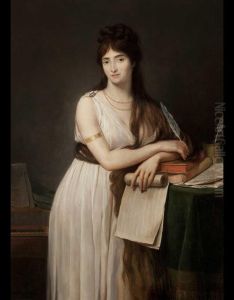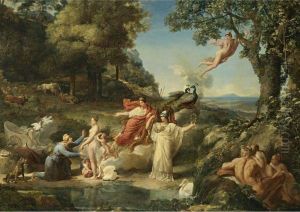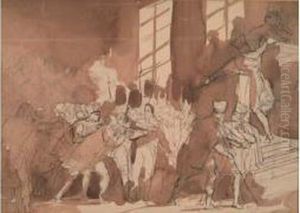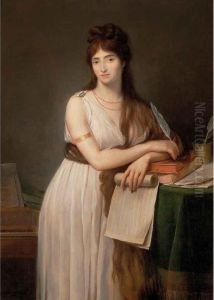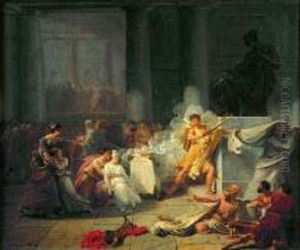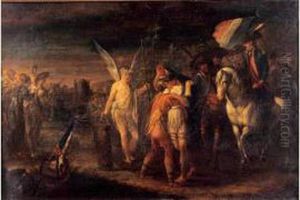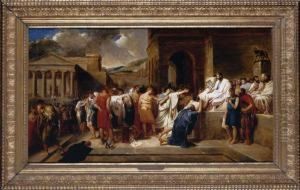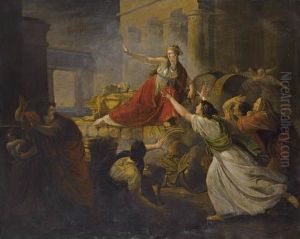Guillaume Lethiere Paintings
Guillaume Guillon Lethière was a prominent French neoclassical painter born on January 10, 1760, in Guadeloupe, a French colony in the Caribbean. His father was a French government official, and his mother was a freed African slave, making Lethière's rise in the French art world a notable achievement given the racial prejudices of the time. In 1774, he moved to France to pursue his education in art, enrolling in the Royal Academy of Painting and Sculpture in Paris.
Lethière is best known for his large, dramatic history paintings with themes from ancient Rome and Greece, which were in vogue during the neoclassical period. His work is characterized by its emotional intensity, detailed depiction of figures, and use of stark, dramatic lighting to heighten the narrative impact. One of his most famous works is 'Brutus Condemning His Sons to Death' (1788), which exemplifies his mastery of historical subject matter and his skill in conveying complex human emotions.
Throughout his career, Lethière struggled with the racial biases of his time, which affected his professional opportunities and recognition. Despite these challenges, he achieved considerable success and was awarded the Prix de Rome in 1784, a prestigious scholarship that enabled him to study in Rome at the French Academy. His time in Italy had a profound influence on his artistic development, deepening his appreciation for classical art and architecture.
After returning to France, Lethière held several important positions, including the director of the French Academy in Rome from 1807 to 1816. This role allowed him to mentor the next generation of French artists, passing on his passion for neoclassical ideals. His tenure in Rome coincided with a turbulent period in European history, encompassing the Napoleonic Wars and the restoration of the Bourbon monarchy in France. Despite the political upheavals, Lethière remained dedicated to his art and continued to produce works that were celebrated for their beauty and emotional depth.
Lethière's legacy is complex; he was a pioneering figure who overcame significant racial barriers to achieve recognition in the European art world. His paintings are notable for their emotional intensity, technical skill, and commitment to neoclassical ideals. He died on April 22, 1832, in Paris, leaving behind a body of work that continues to be studied and admired for its artistic and historical significance.
